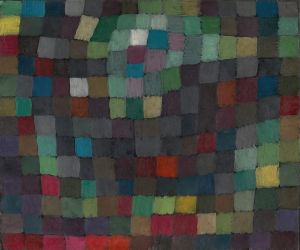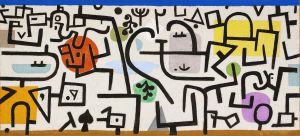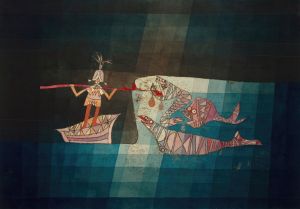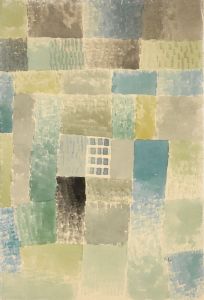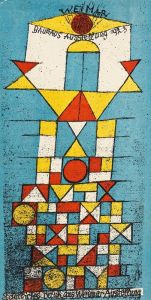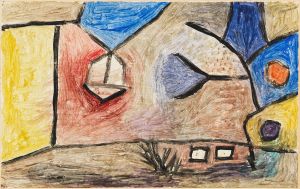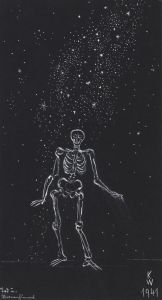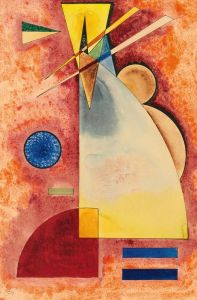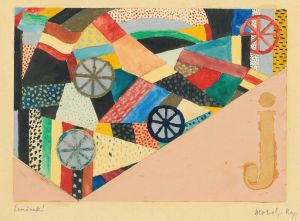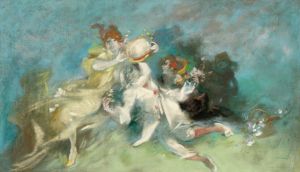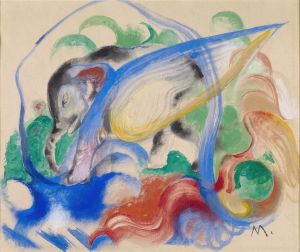
Zwei Kinder
A hand-painted replica of Paul Klee’s masterpiece Zwei Kinder, meticulously crafted by professional artists to capture the true essence of the original. Each piece is created with museum-quality canvas and rare mineral pigments, carefully painted by experienced artists with delicate brushstrokes and rich, layered colors to perfectly recreate the texture of the original artwork. Unlike machine-printed reproductions, this hand-painted version brings the painting to life, infused with the artist’s emotions and skill in every stroke. Whether for personal collection or home decoration, it instantly elevates the artistic atmosphere of any space.
Paul Klee was a Swiss-born German artist known for his highly individual style, which was influenced by movements in art that included Expressionism, Cubism, and Surrealism. His work often features a unique blend of abstraction and figuration, and he is celebrated for his innovative use of color and line. One of his lesser-known works is "Zwei Kinder," which translates to "Two Children" in English.
"Zwei Kinder" is a painting that reflects Klee's interest in the themes of childhood and innocence, which are recurrent in his oeuvre. Klee often drew inspiration from his own experiences and memories, and his work frequently explores the world through the eyes of a child. This perspective is evident in "Zwei Kinder," where the simplicity and directness of the composition evoke a sense of childlike wonder and purity.
The painting is characterized by Klee's signature style, which combines elements of abstraction with recognizable forms. In "Zwei Kinder," the figures of the two children are depicted with a minimalistic approach, using simple lines and shapes. This abstraction allows the viewer to focus on the emotional essence of the scene rather than getting caught up in realistic details. Klee's use of color in this work is also noteworthy; he employs a muted palette that enhances the gentle and serene atmosphere of the painting.
Klee's artistic philosophy was deeply rooted in the idea that art should transcend the visible world and capture the underlying spiritual and emotional truths. This belief is reflected in "Zwei Kinder," where the simplicity of the forms and the subtlety of the colors work together to convey a deeper sense of connection and harmony. The painting invites viewers to engage with it on an emotional level, encouraging them to reflect on their own experiences of childhood and innocence.
Throughout his career, Klee was associated with several influential art movements and groups, including the Bauhaus, where he taught alongside other notable artists such as Wassily Kandinsky. His work has had a lasting impact on modern art, and he is regarded as one of the pioneers of abstract art. "Zwei Kinder" exemplifies Klee's ability to blend abstraction with figuration, creating works that are both visually striking and emotionally resonant.
While "Zwei Kinder" may not be as widely recognized as some of Klee's other works, it remains an important piece within his body of work. It showcases his unique approach to art-making, where simplicity and complexity coexist, and where the mundane is transformed into the extraordinary. Klee's ability to capture the essence of human experience through his art continues to inspire and resonate with audiences today.
In summary, "Zwei Kinder" by Paul Klee is a painting that encapsulates the artist's fascination with childhood and his innovative approach to abstraction. Through its simple forms and muted colors, the work invites viewers to explore the emotional and spiritual dimensions of human experience, reflecting Klee's enduring legacy as a master of modern art.





